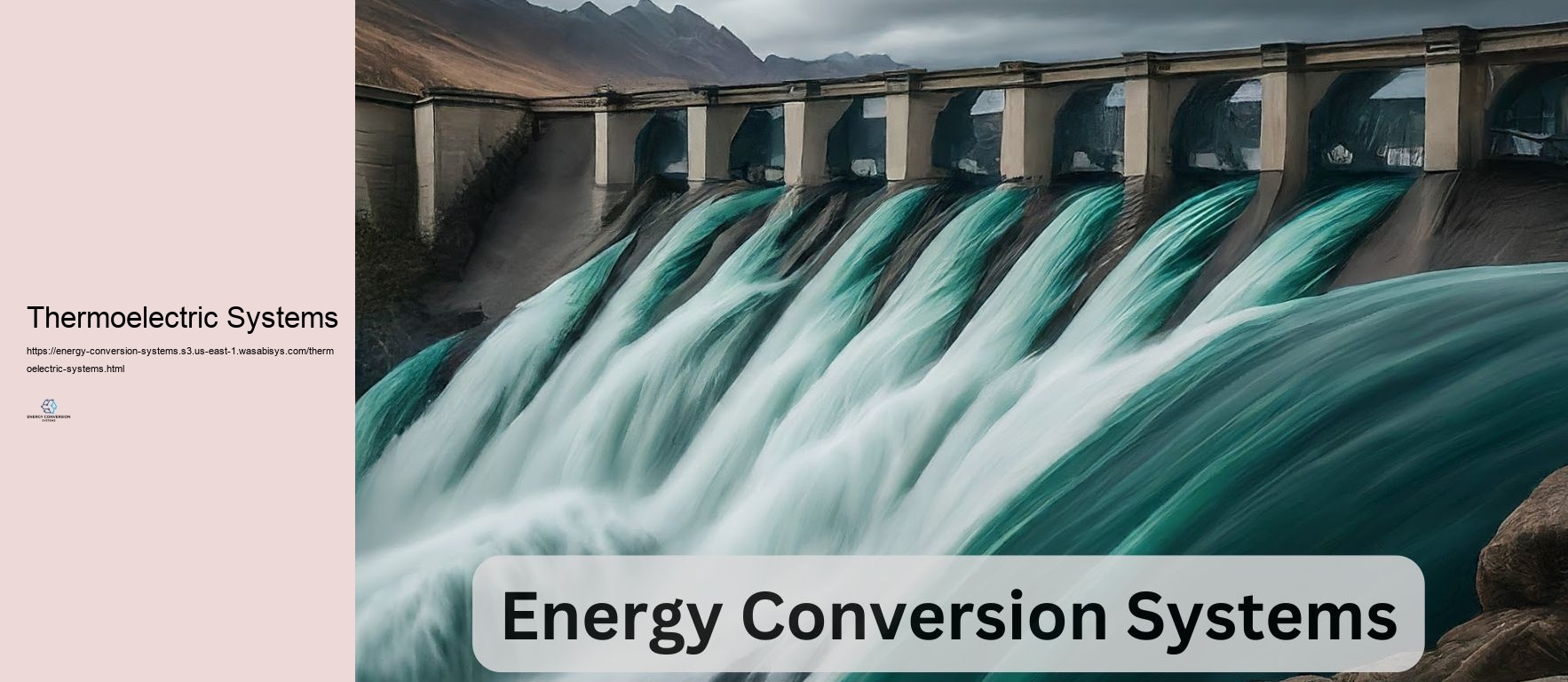

Energy conversion systems play an important function in modern-day society, enabling the improvement of various kinds of energy right into better and useful kinds. These systems are essential to power generation, transport, commercial procedures, and daily innovations. Understanding the concepts and applications of energy conversion systems is essential for designers, policymakers, and any person interested concerning the area of energy. At its core, energy conversion is controlled by the legislations of thermodynamics. The very first guideline of thermodynamics, which states that energy can not be produced or messed up however only transformed from one kind to an additional, is the foundation of all energy conversion systems. The 2nd law presents the idea of worsening and effectiveness, clearing up why no energy conversion treatment can be 100% reliable. These basic principles underpin the format and procedure of all energy conversion systems. One of among one of the most common and substantial energy conversion systems is the thermal nuclear reactor. These facilities change the chemical energy conserved in nonrenewable fuel sources (such as coal, oil, or gas) or nuclear gas right into electric energy. The process normally entails melting the gas to warmth water, generating heavy steam that drives a generator connected to a generator. This system, based upon the Rankine cycle, is an archetype of transforming thermal energy to power and after that to electric energy. Modern thermal nuclear power plant utilize numerous strategies to boost efficiency, such as supercritical heavy steam troubles and mixed cycle systems. Renewable energy systems stand for one more vital group of energy conversion. Solar photovoltaic or pv (PV) panels transform light energy straight into electric energy through the photoelectric result. Wind turbines adjustment the kinetic energy of moving air into power and later on right into power. Hydroelectric nuclear reactor harness the feasible energy of water conserved at elevation, transforming it to power via turbines and later on to electric energy.
Energy conversion innovations go to the facility of changing just how we harness and use energy, playing a critical duty in the change in the direction of lasting and effective energy systems. From photovoltaics to fuel cells, these contemporary technologies include a diverse option of systems that change natural energy sources right into usable kinds, such as electric energy, cozy, and fuel. Each contemporary innovation operates distinct ideas and is fit to information applications, utilizing unique advantages and difficulties. Understanding these developments is crucial for progressing energy treatments that settle worldwide energy demands while lowering eco-friendly effect. Photovoltaics (PV) stand for among one of one of the most thoroughly recognized kinds of solar power conversion. These systems make use of semiconductor materials, generally silicon, to transform sunshine right into power with the photovoltaic or pv impact. When sunlight strikes the surface area of a PV cell, it delights electrons, producing an electric existing. Photovoltaic or pv advancement has really innovative substantially throughout the years, with developments in products and design causing increased effectiveness and decreased costs. Emerging modern technologies, such as thin-film solar cells and organic photovoltaics, are pressing the borders of effectiveness and versatility, making solar energy a whole lot even more accessible and versatile to various applications, from home rooftops to large solar ranches. Focused solar energy (CSP) is one more solar energy conversion modern innovation that differs from photovoltaics by utilizing mirrors or lenses to focus sunlight onto a tiny area, typically a receiver. The concentrated light is traded warmth, which is after that taken advantage of to create heavy vapor that drives a wind turbine linked to an electrical generator. CSP systems are particularly reputable in areas with high straight sunshine and can include thermal energy storage space services to offer power also when the sunlight is not radiating. This capacity to store energy as warm authorizations CSP plants to offer a far more consistent and relied on power outcome contrasted to common solar PV systems. Fuel cells are a flexible energy conversion innovation that develops power with an electrochemical reaction, generally including hydrogen and oxygen. Unlike combustion-based power generation, gas cells produce power without melting fuel, resulting in lower discharges and greater performance. There are various kinds of gas cells, each recognized by the electrolyte used and the operating temperature variety. Polymer electrolyte membrane (PEM) gas cells, for example, are known for their high power thickness and are regularly made use of in transportation applications, such as fuel cell automobiles. Strong oxide gas cells (SOFCs), on the numerous other hand, run at greater temperatures and appropriate for taken care of power generation and business applications. Hydroelectric power is a trustworthy energy conversion technology that makes use of the kinetic energy of streaming water to produce power. By directing water via generators, hydroelectric plants change the energy of relocating water right into power, which is after that transformed right into electric energy by generators. This innovation is highly efficient and can offer a consistent and reliable power supply, making it a cornerstone of renewable energy profiles in great deals of nations. Nevertheless, the eco-friendly influence of large hydroelectric projects, such as habitat disturbance and modifications to water environments, needs conscious intending and administration. Wind energy conversion modern-day innovations catch the kinetic energy of wind making use of generators, which convert it into mechanical energy and eventually right into power. Wind wind turbines are generally mounted in locations with strong and normal wind patterns, such as seaside areas and open levels. Developments in generator format, such as bigger blades dimensions and taller towers, have substantially enhanced the efficiency and ability of wind power generation. Offshore wind farms are likewise acquiring hold, providing the potential for significant energy generation with marginal land usage result. Geothermal energy conversion usage the Planet inner warm to produce power and supply directly home heating applications. Geothermal power plants use hefty vapor or warm water from below ground tanks to drive wind generators and produce electrical power. This innovation is really reliable and can supply a continuous power supply, as geothermal resources are not subject to the abnormality seen in solar and wind energy. In addition, geothermal systems can be used for right heating applications, such as district home heating and greenhouse farming, extra enhancing their adaptability. Biomass energy conversion involves using organic products, such as plant and pet waste, to generate warmth, electric energy, or biofuels.
Energy conversion systems are essential to modern culture, playing an important function in changing raw energy resources right into useful power that gas homes, markets, and transport. These systems encompass a wide array of modern-day technologies and procedures established to transform energy from one kind to another, such as changing chemical energy in gas to power in engines or electrical energy in nuclear power plant. A thorough exam of the necessary parts in energy conversion systems discloses the intricacy and class related to effectively utilizing and taking advantage of energy sources. Comprehending these components is vital for enhancing effectiveness, increasing performance, and lowering eco-friendly impact. The beginning factor of any energy conversion system is the energy source, which can be environment-friendly or non-renewable. Renewable resource sources consist of solar, wind, hydroelectric, geothermal, and biomass, while non-renewable resources consist of nonrenewable fuel sources like coal, oil, and gas, as well as atomic energy. The choice of energy resource substantially impacts the design and procedure of the conversion system, as each resource has unique features, such as routine, energy thickness, and ecological result. As an example, solar power systems rely on solar batteries or solar thermal lovers to record sunlight, while fossil fuel-based systems use burning treatments to release energy kept in chemical bonds. At the heart of any kind of energy conversion system is the energy conversion tool, which modifications the key energy resource right into a different kind of energy. Typical conversion devices include generators, engines, generators, and gas cells. Generators, used in both nonrenewable gas resource and renewable resource systems, transform kinetic energy from vapor, water, or wind right into power, which is afterwards altered right into electrical energy by generators. Inside combustion engines, common in transportation, transform chemical energy from gas into power through regulated explosions. Gas cells, on the various other hand, straight transform chemical energy from hydrogen or various other fuels into electrical energy through electrochemical responses, making use of high performance and reduced emissions. Warmth exchangers are crucial parts in numerous energy conversion systems, particularly those entailing thermal procedures. These gadgets assist with the transfer of heat in between two or extra liquids without mixing them, enhancing the performance of energy conversion. In nuclear power plant, warmth exchangers are utilized to transfer heat from burning gases to water, developing hefty vapor that drives wind turbines. In cooling and home heating systems, they step heat in between interior and outside ambiences, managing temperature degree and increasing energy performance. The format and item selection for cozy exchangers are vital for improving heat transfer rates and minimizing energy losses. Control systems are crucial for the risk-free and effective procedure of energy conversion systems. They keep an eye on and control many criteria, such as temperature level, pressure, circulation rate, and voltage, ensuring that the system runs within specified limitations and reacts effectively to alterations preferred or operating issues. Advanced control systems usage sensing units, actuators, and solutions to maximize performance, boost dependability, and lessen energy use.
Discover the latest advancements in energy conversion systems, from solar and wind to fuel cells and biomass! Learn how these innovations are driving sustainable energy solutions for a cleaner, more efficient future.https://t.co/9SfMjPHIu9
— Turbine Training And Operation (@turbinetraine) August 25, 2024
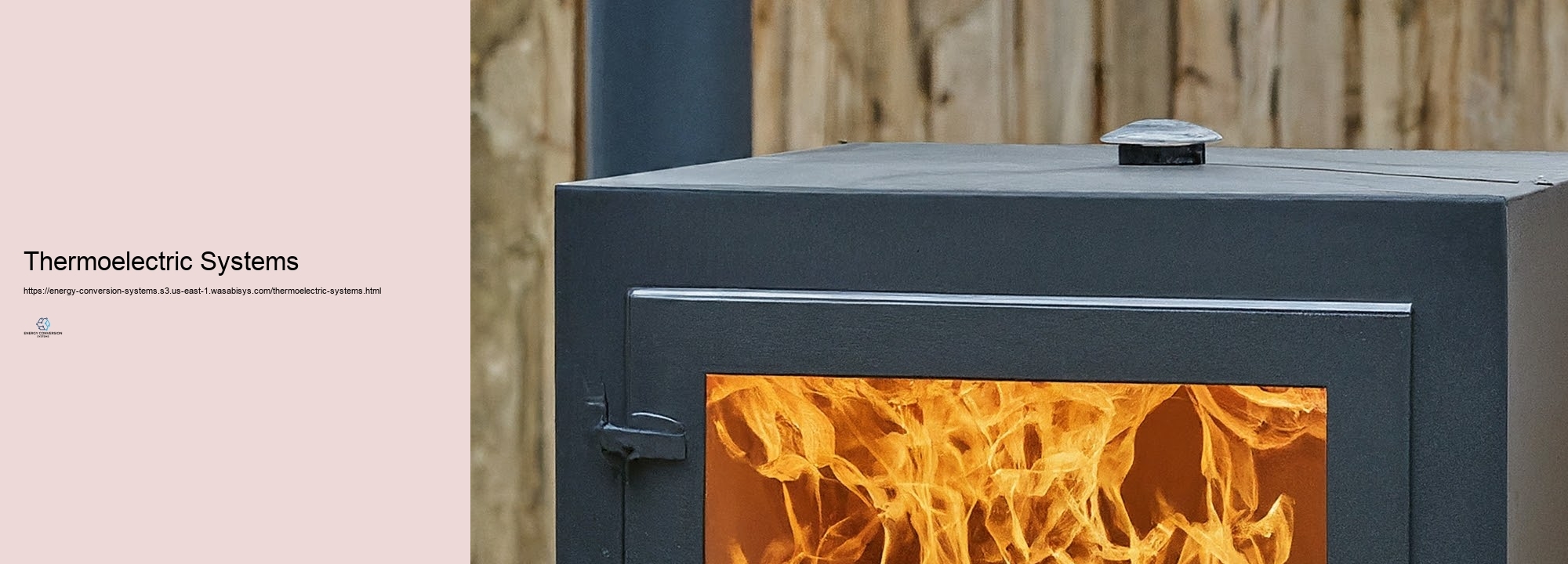
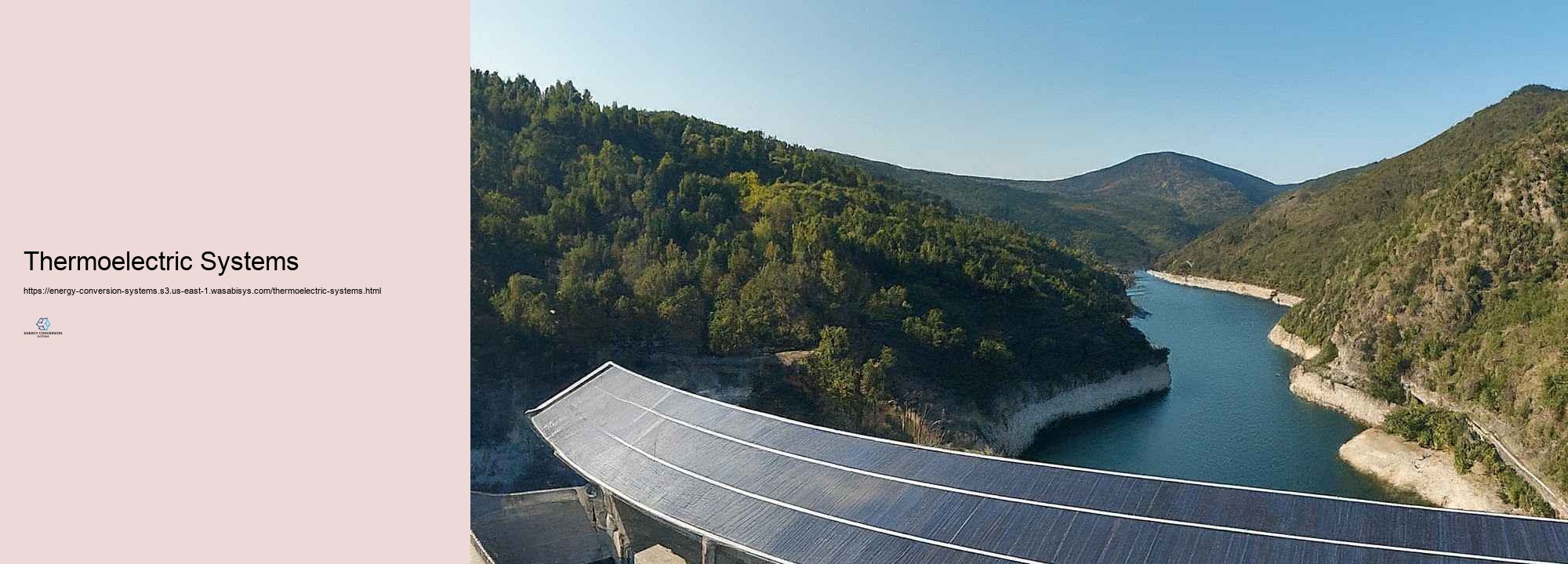
Improving efficiency in energy conversion is a vital objective in the pursuit of lasting and cost effective energy manufacturing. As global energy demand continues to be to boost, improving the efficiency of energy conversion procedures has ended up being significantly essential for decreasing source consumption, minimizing eco-friendly effects, and making sure energy security. This carrying out includes a wide variety of techniques and modern technologies throughout many energy industries, from conventional fossil fuel-based systems to renewable resource advancements. Amongst the essential areas of emphasis for boosting energy conversion effectiveness is in thermal nuclear reactor, which remain a significant source of electric power worldwide. Advanced melting technologies, such as supercritical and ultra-supercritical vapor cycles, have in fact been created to boost the effectiveness of coal-fired nuclear power plant. These systems run at better temperature degrees and anxiety than common plants, allowing greater thermal performance and minimized gas consumption. In a similar way, combined cycle gas generator (CCGT) plants, which utilize both gas and vapor wind turbines, can accomplish efficiency of approximately 60%, substantially above conventional single-cycle plants. Waste cozy recovery systems represent another important technique for improving energy conversion performance. In countless business procedures and power generation systems, a substantial quantity of heat is shed to the setting. By implementing developments such as all-natural Rankine cycles (ORC) or thermoelectric generators, this waste warm can be recorded and converted into useful power. This not only enhances complete system performance nevertheless additionally decreases the requirement for additional energy input, bring about expense monetary cost savings and decreased eco-friendly effect. In the globe of renewable resource, continuous innovations are driving restorations in energy conversion efficiency. Battery Storage Systems For solar photovoltaic or pv (PV) systems, enhancements in cell style and products have led to constant increases in conversion performance. Multi-junction cells, which use various layers of semiconductor items to capture various sections of the solar variety, have really attained effectiveness surpassing 40% in lab setups. Emerging advancements such as perovskite solar panels disclose pledge for extra effectiveness restorations and expense reductions in solar power conversion. Wind energy conversion has in fact furthermore seen significant effectiveness restorations with technological innovations. Bigger generator dimensions, innovative blade layouts, and boosted control systems have in fact raised the capability aspect of wind ranches. Furthermore, the growth of offshore wind modern-day innovation has opened up brand-new possibilities for harnessing much more powerful and far more regular wind sources, in addition boosting energy conversion efficiency. In the area of energy storage, which is vital for taking care of the intermittency of renewable energy resources, various strategies are being sought to increase efficiency. Advanced battery modern-day innovations, such as solid-state batteries and circulation batteries, use the potential for better energy thickness, quicker billing prices, and a lot longer life-spans compared to typical lithium-ion batteries. These renovations can bring about a lot more reputable energy storage space and circulation systems, minimizing losses in the energy conversion chain. Hydrogen making and gas cell advancements stand for one more location of growth in energy conversion performance. While conventional hydrogen manufacturing with vapor methane altering is fairly inadequate, brand-new methods such as high-temperature electrolysis and solar thermochemical water splitting reveal promise for a whole lot more reliable hydrogen making. On the usage side, advancements in gas cell modern innovation, particularly in proton exchange membrane layer (PEM) fuel cells, are enhancing the effectiveness of converting hydrogen into electrical power for different applications, including transportation and dealt with power generation. The concept of cogeneration, or incorporated heat and power (CHP), is an important technique for improving overall energy conversion efficiency. By at one time creating electric energy and useful warmth from a single gas source, CHP systems can attain general efficiencies of approximately 80%, considerably more than different warm and power generation. This method is especially reliable in commercial settings and district home heating system, where there is a consistent need for both power and cozy. Developments in products scientific research are playing a crucial duty in enhancing energy conversion efficiency throughout different developments. High-temperature superconductors, for example, have the potential to considerably reduce energy losses in power transmission and blood circulation systems. In a similar way, the growth of advanced items for generator blades, solar batteries, and gas cells is enabling greater running temperature levels, improved durability, and enhanced effectiveness in energy conversion procedures. The mix of experienced system (AI) and artificial intelligence solutions right into energy systems is another innovative technique to improving conversion effectiveness. These modern technologies can enhance the procedure of nuclear power plant, renewable energy systems, and grid networks in real-time, altering requirements to maximize effectiveness based on present problems and requirement patterns. Preparing for upkeep powered by AI can likewise help prevent gadgets failings and maintain peak efficiency, additionally including in total system performance. Smart grid modern-day technologies and demand-side monitoring strategies are furthermore important for improving energy conversion performance at the system level. By making it possible for far better interaction and control in between energy producers and consumers, smart grids can enhance energy flow, decline transmission losses, and far better incorporate renewable energy sources. Need responses programs, which incentivize consumers to modification their energy use based upon grid issues, can help equilibrium supply and need a lot more efficiently, reducing the requirement for much less reliable peaking nuclear power plant. The principle of energy plunging, where waste energy from one procedure is used as input for another, is obtaining grip as a strategy for improving total system performance. Industrial harmony, where various fields exchange energy and resources, exemplifies this technique. For example, waste warmth from a nuclear reactor might be used for location home heating or business procedures, optimizing the application of energy inputs. Improving the efficiency of end-use modern technologies is in addition vital for overall energy conversion efficiency. This consists of creating more reputable appliances, lighting systems, and industrial tools. The extensive promoting of LED lighting, for example, has actually significantly lessened energy consumption in the lighting field. Similarly, the development of a lot more efficient electric electric motors and variable speed drives has actually increased energy conversion performance in industrial applications. Improving effectiveness in energy conversion is a varied trouble that requires a mix of technical developments, system-level optimizations, and policy aid. From advancements in standard power generation modern technologies to developments in renewable energy and energy storage systems, numerous techniques and developments are being sought to take full advantage of the performance of energy conversion procedures. As these technologies stay to evolve and create, they will certainly play a vital function in creating a much more lasting and efficient energy future. The persisting pursuit of improved energy conversion performance not only includes in environmental sustainability however furthermore enhances energy security and economic competitiveness in a gradually energy-dependent globe.
The mix of renewable energy sources right into conversion systems is a transformative strategy improving the around the world energy landscape. As the globe try to find lasting treatments to accomplish increasing energy demands while easing ecological affects, the function of renewable energy in conversion systems becomes critically essential. This assimilation includes integrating sustainable sources such as solar, wind, hydro, and biomass with typical energy systems to develop crossbreed systems that improve energy producing, improve efficiency, and decrease carbon exhausts. By leveraging the staminas of both green and conventional energy resources, these systems supply a path to a much more sturdy and sustainable energy future. Crossbreed energy systems go to the leading edge of integrating renewable resource resources into conversion systems. These systems incorporate several energy sources to provide a stable and credible power supply. As an example, photovoltaic or pv panels can be paired with wind generators to boost each other, as solar energy is abundant throughout the day while wind energy can be utilized during the night or during over actors days. By incorporating these resources, hybrid systems can reduce reliance on nonrenewable fuel resources, decreased greenhouse gas emissions, and offer an extra regular energy supply. Moreover, hybrid systems normally include energy storage space solutions, such as batteries or thermal storage space, to shop excess energy developed throughout peak manufacturing times for usage throughout durations of minimized renewable resource availability. This capacity increases the stability and flexibility of the energy supply, making it a lot even more resistant to variations in renewable energy generation. The effective assimilation of renewable resource resources right into conversion systems additionally depends heavily on improvements in grid assimilation and smart innovations. Modern power grids are creating to healthy the variable nature of renewable energy sources. Smart grids, supplied with sophisticated noticing units, interaction technologies, and automation, make it possible for real-time keeping track of and monitoring of energy flows. This allows for the effective integration of renewable resource right into the grid, balancing supply and need dynamically. Smart modern-day technologies additionally advertise requirement feedback methods, where consumers readjust their energy usage based on availability and expense signals, in addition maximizing using renewable energy. By improving grid versatility and stamina, these modern technologies maintain the smooth combination of renewables, ensuring a consistent and trustworthy energy supply. Energy storage space options play an important responsibility in the assimilation of renewable resource sources right into conversion systems. The routine nature of renewable resource, such as solar and wind, calls for the requirement for reputable storage room options to warranty a continual energy supply. Advanced battery modern-day technologies, such as lithium-ion and flow batteries, supply reliable storage room selections that can store excess energy created throughout elevation production times and release it when required. In addition, thermal energy storage systems, such as liquified salt storage area, are used together with concentrated solar energy (CSP) plants to keep heat for electric energy generation throughout non-sunny periods. These storage space remedies not just enhance the stability and safety of renewable resource systems yet additionally enable better infiltration of renewables into the energy mix, minimizing reliance on fossil fuels and lowering carbon exhausts. The combination of renewable resource resources is additionally driving the modification towards decentralized energy systems. Unlike standard main power generation, decentralized systems create energy closer to the point of consumption, lowering transmission losses and boosting energy performance. Roofing system photovoltaic panels, little wind wind turbines, and community-based renewable resource jobs are examples of decentralized systems that empower customers to create their very own energy. Compressed Air Energy Storage This decentralization improves energy safety, declines grid blockage, and allows much better customer involvement in the energy market. By incorporating renewable resource resources right into decentralized systems, locations can achieve much better energy self-reliance and durability, adding to a much more lasting and fair energy future. The combination of renewable energy sources right into conversion systems is supported by advantageous policy and regulative structures. Governments worldwide are carrying out plans that motivate the fostering of renewable energy, such as feed-in tolls, tax obligation motivations, and environment-friendly portfolio standards. These plans create a desirable setting for financial investment in renewable energy jobs and advertise {research and development in innovative technologies. Furthermore, governing frameworks are proceeding to suit the distinctive high qualities of renewable resource, such as grid affiliation criteria and net metering strategies. By supplying a protected and valuable plan atmosphere, federal governments can increase the integration of renewable energy sources right into conversion systems, driving the change to a lasting energy future. The adaptation of renewable resource resources right into conversion systems offers significant eco-friendly and monetary advantages. By minimizing reliance on nonrenewable gas sources, these systems reduced greenhouse gas wears down, adding to environment change reduction and boosted air quality. Using renewable energy also decreases water usage and reduces the environmental influence of energy manufacturing. Financially, the combination of renewables develops chances for task development and monetary growth in the clean energy industry. The decreasing rates of renewable resource developments, combined with advancements in energy storage and grid combination, make renewable energy significantly competitive with conventional energy resources. As a result, the assimilation of renewables right into conversion systems not simply maintains eco-friendly sustainability yet likewise boosts energy cost and economic strength. Despite the different benefits, the mix of renewable resource sources right into conversion systems faces various difficulties. These consist of the abnormality and intermittency of renewable energy, the requirement for substantial centers financial investments, and the complexity of handling different energy resources. However, continuous {research and development initiatives are attending to these obstacles, leading the way for extra reliable and reputable integration. The future prospective clients for renewable energy adaptation are motivating, with continued technologies in modern innovation, strategy support, and market attributes driving the transition to a lasting energy future. As renewable resource comes to be an integral element of conversion systems, it will certainly play a crucial duty in conference worldwide energy needs while protecting the establishing and advertising and marketing economic growth. The assimilation of renewable energy resources right into conversion systems is a transformative procedure that provides a pathway to an additional lasting, reliable, and resilient energy future. By leveraging crossbreed systems, smart contemporary technologies, energy storage room alternatives, and encouraging plan frameworks, the adaptation of renewables can maximize energy making, lower discharges, and boost energy safety. As the world continues to be to prioritize sustainability and climate
activity, the combination of renewable energy right into conversion systems will definitely be a vital lorry motorist of the worldwide energy shift, creating a cleaner and much more sustainable future for generations ahead.
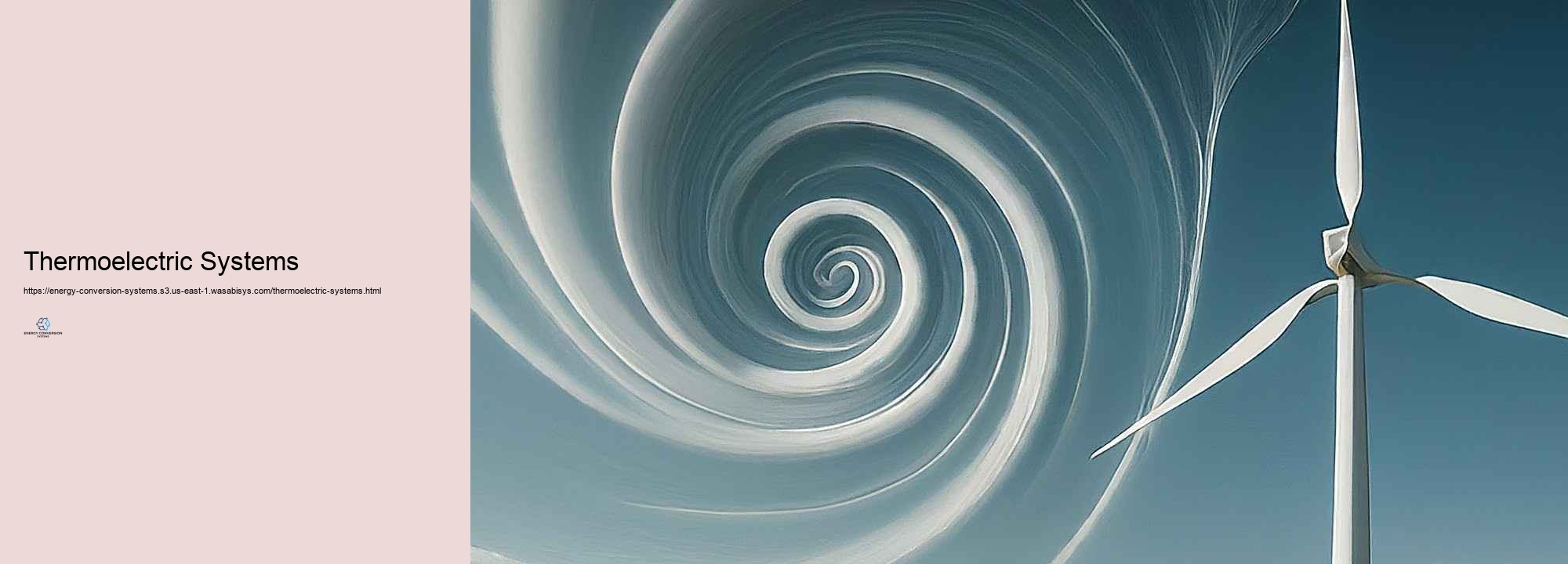
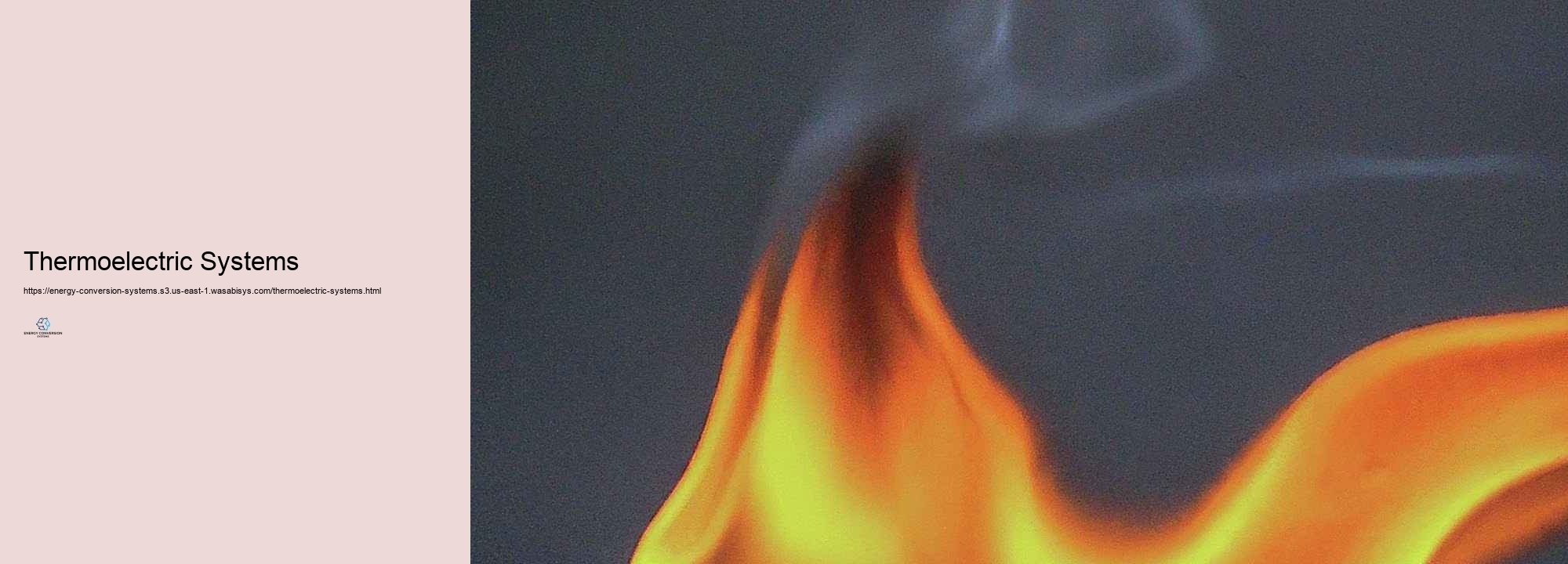
Energy conversion system design is a complex field that faces many challenges in the quest for much more effective, sustainable, and economical remedies. As global energy demands remain to rise and ecological issues rise, designers and researchers are delegated with producing ingenious techniques to conquer these challenges. This intro discovers the key problems in energy conversion system format and the arising treatments that are creating the future of energy technology. Among the crucial difficulties in energy conversion system format is improving effectiveness. All energy conversion processes include some degree of energy loss, as determined by the policies of thermodynamics. For thermal systems, such as power plants, this inefficiency is commonly shown up as waste warmth. Resolving this obstacle requires a varied method. Advanced products that can endure greater temperatures and stress are being established, enabling extra trustworthy thermodynamic cycles. For instance, supercritical and ultra-supercritical heavy vapor cycles in coal-fired nuclear power plant can achieve better efficiencies by running at unbelievably warms and tension. In interior shedding engines, advancements in melting chamber design, gas shot systems, and exhaust gas recirculation are pushing the boundaries of efficiency. An added substantial trouble is the intermittency and irregularity of renewable resource resources. Solar and wind power, while tidy and dramatically cost-competitive, are not constantly provided. This irregularity positions barriers for grid security and stability. Solutions to this obstacle include the advancement of innovative energy storage area systems, such as grid-scale batteries, pumped hydro storage area, and emerging developments like flow batteries. Moreover, the design of crossbreed systems that incorporate different energy sources (e.g., solar-thermal crossbreed plants) can aid reduce the intermittency concern. Smart grid advancements and demand comments systems are furthermore being established to far better manage the balance in between variable supply and requirement. Environmental impact is an essential factor to consider in energy conversion system style. Lowering exhausts, especially from fossil fuel-based systems, is a considerable difficulty. Solutions include the development of carbon capture and storage area (CCS) technologies, which purpose to record CO2 discharges prior to they enter the environment. Advanced burning contemporary technologies, such as oxy-fuel melting and chemical looping combustion, are being explored to promote far more efficient carbon capture. For renewable energy systems, problems include lessening the ecological influence of generating treatments and dealing with concerns like wildlife protection in wind ranch format. Scalability and cost-effectiveness existing continual problems in energy conversion system style. Great deals of encouraging innovations that feature well in lab configurations face issues when scaled approximately organization levels. As an example, gas cells have disclosed fantastic feasible for reputable energy conversion, but difficulties in scaling up manufacturing and minimizing costs have minimal their prevalent fostering. Solutions include research study right into brand-new products and making treatments to minimize rates and enhance durability. On top of that, modular design methods are being looked into to help with easier scaling and modification of energy systems. The assimilation of different energy conversion systems settings an extra substantial problem. As the energy landscape ends up being a great deal more diverse, with a mix of typical and eco-friendly resources, creating systems that can interact successfully ends up being important. Solutions contain the development of ingenious control systems and power electronic devices that can deal with the intricacies of integrating different energy sources. Online nuclear reactor ideas, which accumulation and coordinate distributed energy resources, are ending up being a service to this assimilation trouble. Product constraints existing persisting difficulties in energy conversion system style. Lots of innovative energy technologies require uncommon or expensive items, which can restrict their scalability and monetary usefulness. For example, some high-efficiency solar batteries trust uncommon planet facets. Solutions to this challenge include study into alternate products, such as earth-abundant aspects for solar panels, and the development of recycling advancements to recover and reuse important items from deactivated systems. Thermal keeping an eye on is an essential trouble in great deals of energy conversion systems. Effective cooling down is crucial for maintaining efficiency and long life, specifically in high-temperature applications like gas wind generators or concentrated solar energy systems. Solutions include innovative cooling modern technologies, such as closed-loop hefty vapor a/c for gas generator blades, and the growth of brand-new products with better heat-resistant structures. In digital systems, developments in cozy sink style and making use of phase-change items for thermal keeping track of are being looked into. Microturbines Energy storage continues to be a significant trouble, especially for applications requiring high energy thickness or rapid charge/discharge cycles. While lithium-ion batteries have actually seen substantial renovations, they still experience constraints in energy thickness and cycle life. Solutions being discovered include the innovation of solid-state batteries, which pledge greater energy densities and boosted safety and safety, and research study right into special chemistries like lithium-sulfur or lithium-air batteries. For grid-scale storage space, blood circulation batteries and innovative mechanical storage systems (like compressed air energy storage area) are being established. The trouble of system integrity and upkeep is important, specifically as energy systems come to be a lot more complicated and distributed. Guaranteeing long-term integrity while decreasing upkeep needs is important for the financial stability of energy conversion systems. Solutions include the innovation of advanced security and diagnostic systems, commonly leveraging artificial intelligence and machine learning algorithms to anticipate and protect against failings. The idea of self-healing systems, which can instantly discover and address little problems, is additionally being had a look at. Flexibility in energy conversion systems is ending up being progressively critical as energy grids progression. Systems demand to be able to respond quickly to adjustments prominent and supply, specifically with the enhancing seepage of variable renewable resource resources. Solutions consist of the development of a lot more flexible thermal nuclear power plant that can boost and down promptly, utilizing energy storage space systems to supply grid solutions, and the execution of need feedback technologies that can change energy usage based upon grid problems. The location of energy conversion system style encounters many challenges in the search of more dependable, lasting, and reputable energy services. Nonetheless, these obstacles are driving innovation throughout a wide array of contemporary technologies and methods. From cutting-edge products and unique system creates to the adaptation of digital innovations and smart control systems, the services being developed are not just taking care of existing barriers yet also leading the way for the future generation of energy conversion systems. As {research and development proceed, these solutions ensure to enhance the worldwide energy landscape, moving us towards a much more lasting and efficient energy future.
The impact of energy conversion systems on eco-friendly sustainability is profound and diverse, impacting whatever from greenhouse gas exhausts and resource shortage to ecological neighborhood health and wellness and health and biodiversity. As the around the world demand for energy continues to be to surge, driven by populace development and economic development, the demand for lasting energy options ends up being progressively urgent. Energy conversion systems, which change raw energy resources right into functional kinds such as electrical power, warm, and gas, play an important task in this modification. By examining the ecological affects of various energy conversion modern-day technologies, we can better comprehend their settlements to sustainability and recognize paths for improvement. Standard energy conversion systems, specifically those depending upon nonrenewable fuel sources such as coal, oil, and gas, have actually traditionally been significant factors to environmental devastation. The burning of these fuels launches considerable quantities of co2 (CO2) and various other greenhouse gases right into the atmosphere, driving environment alteration and its connected affects, such as climbing global temperatures, sea-level rise, and severe weather condition occasions. Additionally, nonrenewable fuel resource removal and processing can bring about setting devastation, dirt and water contamination, and air pollution, much more heightening eco-friendly difficulties. In contrast, renewable energy conversion systems, such as solar, wind, hydroelectric, and geothermal, usage even more lasting choices by utilizing natural energy streams that are bountiful and replenishable. These systems normally create bit to no direct tires during procedure, significantly decreasing their carbon impact contrasted to fossil fuel-based innovations. For instance, solar photovoltaics and wind turbines produce electrical power without shedding gas, staying clear of the release of co2 and different other contaminants. Hydroelectric power, while generally emission-free throughout procedure, must be meticulously taken care of to reduce feasible eco-friendly impacts, such as changes in water blood circulation and fish migration patterns. The change to renewable energy conversion systems is essential for achieving environmental sustainability, as it align with initiatives to reduce greenhouse gas discharges and restriction global warming up. By altering fossil fuel-based systems with renewables, we can reduction the focus of carbon dioxide in the atmosphere, minimizing the progression of setting adjustment and its harmful effects on environments and human cultures. Additionally, renewable resource systems commonly ask for much less land and water than conventional energy sources, lowering their basic eco-friendly impact and keeping natural environments. Nonetheless, the implementation of renewable resource conversion systems is not without its obstacles. The production, installation, and maintenance of these systems can have ecological impacts, including resource removal, waste generation, and land take advantage of changes. As an example, the manufacturing of photovoltaic or pv panels includes utilizing uncommon and restricted products, such as silicon and silver, together with perhaps harmful chemicals. Wind wind turbine manufacturing calls for substantial quantities of steel and concrete, and their installation can effect regional wild pets and landscapes. To fix these concerns, it is essential to handle lasting techniques throughout the lifecycle of renewable energy systems, from layout and producing to decommissioning and reusing. Energy storage space systems, which are important to the efficient integration of renewable energy into the grid, furthermore have eco-friendly effects. Batteries, for example, count on items like lithium, cobalt, and nickel, the extraction and processing of which can cause ecological degeneration and social obstacles. Developing added sustainable battery innovations, such as those based upon plentiful and safe materials, and boosting recycling procedures are crucial actions in the direction of lessening the environmental effect of energy storage space. Past exhausts and source usage, energy conversion systems can likewise impact environmental sustainability with their impacts on biodiversity and neighborhoods. Massive energy tasks, whether environment-friendly or fossil-based, can cause environment fragmentation, wild animals variation, and modifications in land usage patterns. As an example, the construction of hydroelectric dams can flood large areas of land, interfering with earthbound and marine ecological communities. Wind farms, while normally having a minimized impact, can present dangers to bird and bat populations or else correctly sited and handled. To alleviate these effects, it is important to do detailed ecological analyses and participate in careful prep work and stakeholder analysis throughout the development of energy jobs. Together with technical advancements, strategy and regulative frameworks play a crucial role healthy the eco-friendly sustainability of energy conversion systems. Federal governments and global organizations can incentivize the adoption of clean energy developments via aids, tax obligation credit rankings, and exhausts trading systems. They can also carry out rigorous environmental needs and laws to make certain that energy tasks lower their ecological influence and add favorably to sustainability goals. Public recognition and communication are just as essential, as enlightened people can promote for lasting energy policies and approaches, driving demand for cleaner and extra accountable energy solutions. At some point, the effect of energy conversion systems on environmental sustainability relies on our capability to present and adapt. Thermoelectric Systems By progressing {research and development in clean energy contemporary innovations, boosting effectiveness, and promoting collaboration throughout sectors and borders, we can boost the change to an extra lasting energy future. This shift not simply deals with the pressing obstacles of environment adjustment and source deficiency but also creates possibilities for economic advancement, task manufacturing, and improved lifestyle. As we aim to support energy demands with eco-friendly stewardship, the ongoing development and optimization of energy conversion systems will absolutely be essential to acquiring a lasting and resilient around the world energy system.
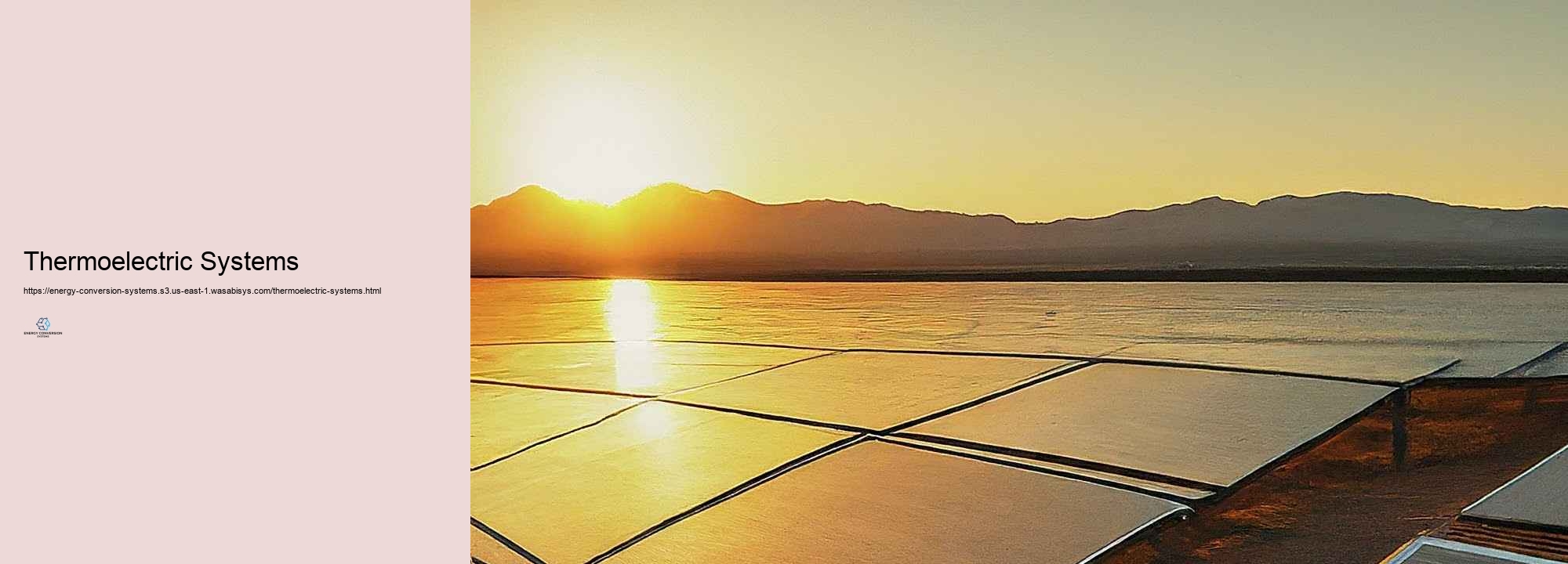
Energy conversion systems are technologies or processes that transform one form of energy into another, such as converting solar energy into electricity or mechanical energy into electrical energy.
Common types of energy conversion systems include solar photovoltaic panels, wind turbines, fuel cells, hydroelectric power systems, and geothermal energy converters.
Energy conversion systems improve efficiency by optimizing the process of converting energy from one form to another, reducing waste, and enhancing the overall output of usable energy.
Energy conversion systems are crucial in renewable energy as they enable the transformation of natural energy sources like sunlight, wind, and water into electricity, supporting sustainable power generation.
Challenges include optimizing efficiency, minimizing energy loss, integrating with existing grids, managing costs, and ensuring reliability and sustainability of the energy sources used.